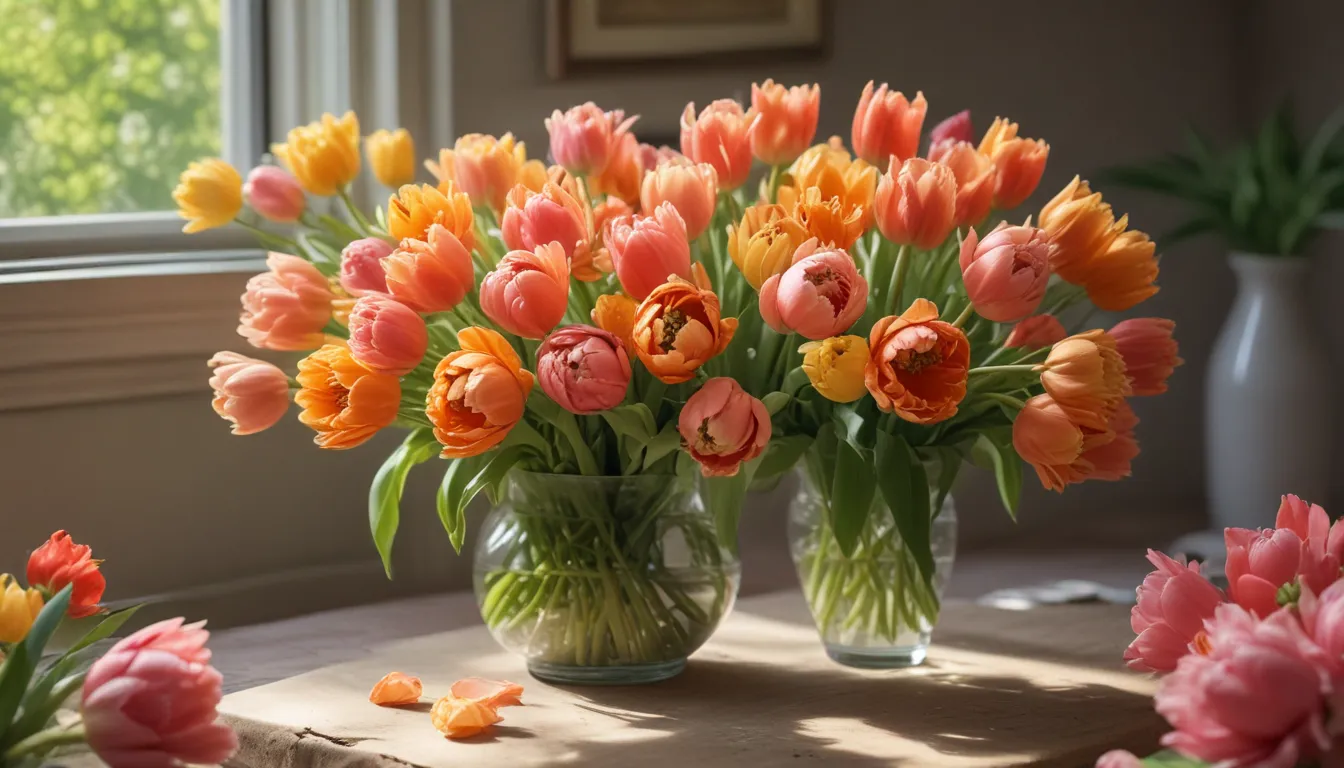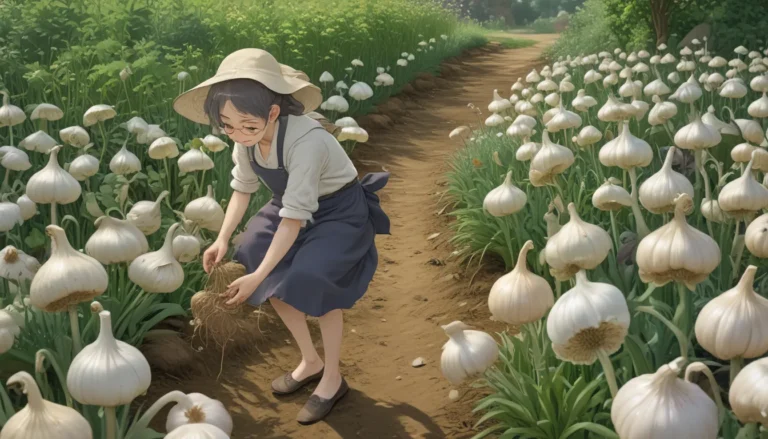The Ultimate Guide to Growing and Caring for Parrot Tulips in Your Garden

When we think of spring, our minds drift to visions of vibrant, colorful tulips ushering in the new season. Among the array of tulips, one variety stands out for its unique and captivating appearance – the parrot tulip.
Characterized by twisted, curled, and ruffled petals in striking colors, the parrot tulip, scientifically known as Tulipa gesneriana var. dracontia, is a show-stopping addition to any garden. In this comprehensive guide, we will delve into the world of parrot tulips, from their history to essential care tips, and explore the diverse cultivars available for your gardening pleasure.
Let’s embark on a colorful journey and discover the enchanting world of parrot tulips.
Unveiling the Beauty of Parrot Tulips
Tulips are a timeless favorite among gardeners, with their cheerful blooms symbolizing the arrival of spring and the promise of warmer days. The parrot tulip, however, with its exotic appearance and intricate petals, adds a touch of whimsy and flair to the typical tulip display.
Featuring vivid combinations of colors and unique shapes, parrot tulips stand out as majestic mutants in the tulip family. Originating from the Tulipa genus traced back to the Ottoman Empire, these tulips have undergone various mutations over the years, resulting in their distinct characteristics.
The term “parrot” is derived from the flower’s resemblance to a colorful parrot, both in its plumage-like appearance and beak-like bud. With flowers measuring up to five inches in diameter and stems reaching over 20 inches tall, parrot tulips make a bold statement in the spring garden.
Essential Care Tips for Parrot Tulips
While parrot tulips steal the spotlight with their flamboyant petals, they require special care to thrive and dazzle with their vibrant blooms. Here are some key care tips to ensure your parrot tulips flourish:
-
Choose a sheltered location: Parrot tulips are not as tolerant of temperature extremes as other varieties. Select a spot sheltered from strong winds, avoiding northern exposures, and consider the protective cover of a building for added insulation.
-
Protection from the elements: Parrot tulips are more delicate and less tolerant of high winds and heavy rain. If severe weather is forecasted, use lightweight covers like storage tubs or lawn chairs to shield the blooms and prevent damage.
-
Mulch for insulation: To support parrot tulips as perennials, apply a layer of mulch (2-3 inches) once the foliage fades. The mulch provides insulation against summer heat and winter cold, ensuring the bulbs thrive year after year.
By following these care guidelines, you can pamper your parrot tulips and witness their stunning display bloom season after season.
Exploring Parrot Tulip Cultivars
The world of parrot tulips is teeming with a diverse array of cultivars, each exhibiting unique colors and patterns to enchant gardeners. Here are some standout cultivars that are sure to captivate your heart:
Apricot Parrot
With oversized apricot and pink petals adorned with green and yellow streaks, the Apricot Parrot cultivar is a stunning addition to any garden. Awarded the Royal Horticultural Society’s prestigious accolade, this variety blooms in late spring, reaching heights of 16 to 24 inches.
Black Parrot
For a touch of drama and elegance, the Black Parrot cultivar boasts deep purple petals with feathery edges, creating a striking contrast in the garden. Recognized with the RHS Award of Garden Merit, this variety blooms atop 16 to 24-inch stems, adding a touch of sophistication to your landscape.
Victoria’s Secret
Featuring large bright purple blooms with fringed edges and a yellow center, the Victoria’s Secret cultivar exudes a sense of charm and beauty. Released as a brand new cultivar in 2021, this variety grows to a height of twenty inches and blooms in mid to late spring, adding a pop of color to your borders or cut flower arrangements.
Green Wave
With flame-like green blooms accented by mauve and bright pink scalloped edges, the Green Wave cultivar offers a captivating color palette that is sure to mesmerize any observer. Blooming in mid to late spring and reaching a height of 18 inches, this variety adds a burst of color and intrigue to your garden.
Quick Reference Growing Guide
For those eager to plant and nurture parrot tulips in their garden, refer to this quick reference guide for essential information at a glance:
Plant Type: Flowering bulb
Native to: Middle East, Turkey
Hardiness (USDA Zone): 3-7
Bloom Time / Season: Spring
Exposure: Full sun to part shade
Spacing: 2-6 inches
Planting Depth: 4-6 inches
Height: 16-24 inches
Spread: Up to 6 inches
Water Needs: Moderate
Common Pests and Diseases: Aphids, Japanese beetles, slugs, wireworms; Augusta disease, botrytis, botrytis blight
By following this handy guide, you can successfully cultivate and enjoy the beauty of parrot tulips in your garden.
Embrace the Splendor of Parrot Tulips
As you embark on your journey to cultivate and care for parrot tulips, remember to embrace the unique charm and allure of these captivating flowers. Whether you choose the vibrant Apricot Parrot or the dramatic Black Parrot, each cultivar offers a distinct personality and color palette to enrich your garden.
Create stunning displays by interplanting parrot tulips with complementary flowers like alliums, daffodils, or lilies, enhancing the visual appeal of your garden landscape. Whether enjoyed as perennials or annuals, parrot tulips are sure to captivate with their exotic blooms and vibrant colors.
As you nurture your parrot tulips with care and attention, you’ll be rewarded with a spectacular show of blooms that herald the arrival of spring and infuse your garden with beauty and charm.
Have you had the pleasure of growing parrot tulips in your garden? Share your tips and experiences in the comments below and inspire fellow gardeners with your insights.
In conclusion, parrot tulips are not only a visual feast for the eyes but also a delightful addition to any garden landscape. By following the care tips and exploring the diverse cultivars available, you can create a vibrant tapestry of colors and shapes that celebrate the beauty of spring and the joy of gardening.
Embrace the splendor of parrot tulips and let their exotic blooms transport you to a world of enchantment and beauty in your very own garden sanctuary. Happy gardening!





